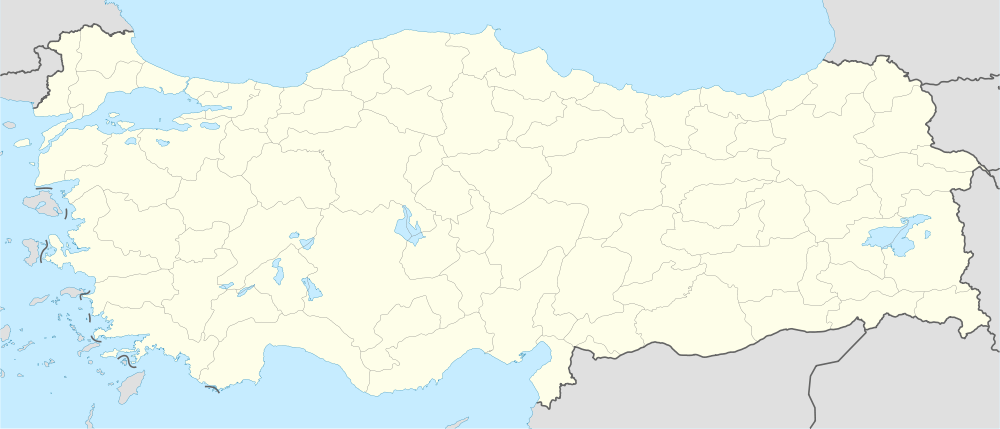Sis (ancient city)
| Sis | |
|---|---|
|
The fortress the old Armenian Capital Sis | |
 | |
| Location | Near the modern town of Kozan, Adana Province, Turkey |
| Coordinates | 37°26′40″N 35°48′37″E / 37.44444°N 35.81028°ECoordinates: 37°26′40″N 35°48′37″E / 37.44444°N 35.81028°E |
| History | |
| Builder | Hittites |
| Founded | 3rd millennium BC |
| Abandoned | 1921 |
Sis (Armenian: Սիս) was the capital of the Armenian kingdom of Cilicia.[1] The city was at a height just to the south of the current Turkish town of Kozan in the Adana Province.
History
Since the 3rd millennium BC, the area of Sis has been one of the major Hittite settlements on the plains beyond the Mediterranean coast.
During the 1st century BC, Sis became known as Flavias or Flaviopolis in the former Roman province of Cilicia Secunda. The city was known by the names of Issos, Pindenissos. The names Sisan or Sisia are first mentioned in the fifth and sixth centuries in Greek and Latin sources. In 703 AD the city was conquered by Arabs. According to Arabic sources from the eighth century, Sis' population was mainly Armenian.
During Thoros I, Prince of Armenia's reign, Armenian forces with the help of native Armenians conquered Sis. Thoros also established the Drazark monastery, which later became the Rubenid dynasty's mausoleum. In 1173 AD Mleh made Sis Cilician Armenia's capital. During the reigns of Leo II and Hethum II Sis was rebuilt and beautified with palaces, civilian and religious buildings, and gardens. Sis is well presented in the works of Villebrand, an Austrian ambassador to Sis from 1211 to 1212. After Hromkla was conquered by Mamluks, Sis became the Catholicos' residence. In 1266 Mamluks looted and burnt the city. In 1275 Mamluks again surrounded the city, but were defeated by Armenian forces. A century later, in 1369 Mamluks again conquered the city, but were forced to leave. Finally, in 1375 Mamluks took the city, looted and burnt it, and captured the king and many lords. With Sis fallen also fell the Armenian Kingdom of Cilicia.
According to Gregory of Akner,
| “ | They burned the town of Sis, which was the seat of the Armenian kings. They cast wood into the fire and great church which was the center of Sis and they burned it. They demolished the tombs of the kings.[2] | ” |
References
See also
| ||||||
